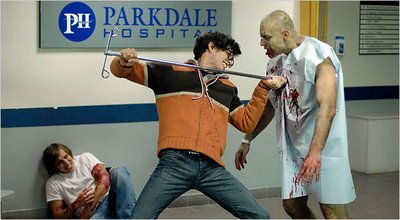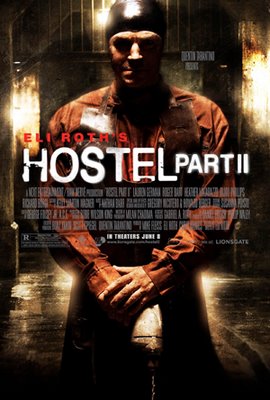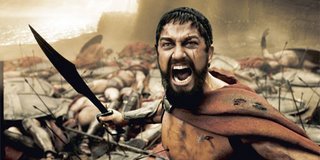Film review: The Baader-Meinhof Complex.
 In these times of apparently unstoppable mass-casualty extremist Islamist terrorism, the likes of the Baader-Meinhof gang, as they were known, or the Red Army Faction, as they called themselves, appear almost quaint by comparison. This might well be partly because in the UK we have never experienced much in the way of overt left-wing terrorism, our quota for targeted explosions having been filled by the IRA; doubtless their victims in Germany feel differently. Whilst the film only makes brief allusions to our modern-day reality, the one exemplary message which it puts across is that terrorism, regardless of who it is committed by or why, can only be defeated through legitimate, legal means. Much else is muddled and ambiguous.
In these times of apparently unstoppable mass-casualty extremist Islamist terrorism, the likes of the Baader-Meinhof gang, as they were known, or the Red Army Faction, as they called themselves, appear almost quaint by comparison. This might well be partly because in the UK we have never experienced much in the way of overt left-wing terrorism, our quota for targeted explosions having been filled by the IRA; doubtless their victims in Germany feel differently. Whilst the film only makes brief allusions to our modern-day reality, the one exemplary message which it puts across is that terrorism, regardless of who it is committed by or why, can only be defeated through legitimate, legal means. Much else is muddled and ambiguous.The makers of the Baader-Meinhof Complex claim that every scene is historically accurate, and with it being based upon the book by Stefan Aust, a contemporary of some of those who made up the group, you would have thought you could have at least some faith in the adaptation. This is in fact stretched to breaking point from the very beginning, where it is at least heavily implied that Benno Ohnesorg, the student shot dead while protesting against a visit by the Shah of Iran, was murdered by Josef Bachmann, a right-wing extremist who went on to make an assassination attempt on the leader of the students' movement, Rudi Dutschke, who never fully recovered. The shooting of Ohnesorg, combined with the breaking up of the protest by pro-Shah elements while the police first looked on and then joined in the orgy of violence, was the catalyst that sparked the coming together of the RAF.
Concentrating, unsurprisingly, on Baader and Meinhof, we never get really past the point of superficiality with any of the main players. Baader, played by Moritz Bleibtreu, is the charismatic former petty criminal that is depicted straight out of the box as a hypocrite, egomaniac, possible psychopath and with no real ideological bearing whatsoever. Meinhof, played by Martina Gedeck opens the film proper, with a scene on a nude beach, her daughters and husband playing in the surf whilst she sits alone and clothed. If the implication is that throughout she was the outsider, the radical journalist that abandons just the pen and takes up the gun, but is still never really accepted by her comrades, then her explanation for doing so is also rendered, like much else, as ambiguous. One of the conceits is that her husband is obviously cheating on her, with a gorgeous blonde no less, who walks by on the beach, stops for a chat and then saunters off. She takes the children when she inevitably finds him up to the hilt inside her, and if anything it is her husband's betrayal as much as her convictions that results in her joining the comparative youngsters in the RAF. Even less satisfying is the way Meinhof, after declaring her love for her children and saying she'd never give them up, suddenly decides to do just that, surrendering them to go and live in the Palestinian refugee camps of Jordan.
If Baader provided the romance, then Meinhof provided the RAF's ideological underpinning, writing the Urban Guerilla Concept, and while the group thrashed out incoherently at a whole series of injustices, not just protesting violently against the complicity of the late 60s/early 70s West German government with Nazism, when many lower-level officials were still ex-fascists, but against American imperialism in Vietnam and the plight of the Palestinians in Israel amongst other things, the film also falls majorly short on providing us with any real examples of the members arguing or debating such issues. The closest we come is Gudrun Ensslin, played by Johanna Wokalek, sitting in a steaming bath reading Trotsky. Meinhof's justifications for the various bombs and assassinations are played out along with the violence, but their crudity would for the most part shame even our modern vacuous suicide bombers and their gloating messages from the beyond.
Instead what we have is a group of sexy young people doing essentially, sexy young, impulsive things. The key line is from when the group decamp to Jordan to train with the Popular Front of the Liberation of Palestine, where they reject the strictures placed on them by their faintly religious hosts and spend most of their time sunbathing naked on the roof of their quarters, which goes down well with the agog young sex-starved fighters that have most likely never seen such an abundance of naked white flesh before, but further shows the contempt they have for those they are supposed to be in solidarity with. Ensslin shouts, when challenged, "that shooting and fucking are the same thing", and for them that much is true. Baader himself, again you have to wonder how realistically, is shown to be a bigot, and objects to having to crawl under barbed wire in the sand "as they are urban guerrillas", which while a good point, rather undermines their reasoning behind attending the camp in the first place.
Some of these complaints can be answered with the fact that the film doesn't set out to delve too deeply into why the RAF did what they did; rather, it is an objective account, almost a slightly fictionalised record of the original founders of the group from 68 to 77, and that to have gone any further would have extended the already 2hr30mins running time. What you're getting is what you see, and very little else. Irrespective of that, this opens up the allegation that the film as a result romanticises, even sexualises terrorism, one made in Germany itself, and while undoubtedly those involved are impossibly good looking, endlessly alluring, wear the most chic clothes, all long legs, perfect plump bodies and accurate hair-styles, it doesn't quite reach that low.
One of the things that saves it from doing that is the more than sympathetic portrayal, alongside the inexorable action, which is as crisply photographed and choreographed as anything Hollywood can manage, of Horst Herold (Googlish biography), the police chief charged with tracking down and stopping the group's members in their tracks, played by Bruno Ganz, most well known for his turn as Hitler in Downfall. Coming across as a firm authoritative but determined liberal, again making you wonder wholly about the reality, he makes allowances for the group and their actions in ways which no one could get away with doing for jihadists now. He realises that when the momentum behind the student movement starts to subside, the RAF itself will only step up its campaign, which is exactly what happens. He knows that the martyrdom of their members will only further the sympathy which the group engendered, especially among the German youth, which nonetheless happened when the hunger striker Holger Meins succumbed, partially as a result of prison brutality, which inspires the second generation of the RAF to take their revenge, almost completely independently of the leadership in Stammheim prison.
The film finally falls completely apart in the last half hour, the strands frayed almost beyond comprehension as the second generation of members enters with even less back-story and explanation. Undoubtedly this is partly because the leaders of the original group themselves knew next to nothing about them, but it does nothing to help any ignorant in the audience follow what's going on. Also frustrating is again the way it keeps open the possibility that Meinhof did not take her life by her own hand, hinting at the way she had been ostracised by the others for apparently beginning to find her conscience, or alternatively, for drifting into mental illness.
It's the implication though of the second, even third generation of RAF fighters that Baader alludes to, all springing up independently of the leadership with just the group's schizophrenic ideals as their motivation that has the message for us today. The RAF after all did not formally disband until 1998, more than 20 years after the original leaders killed themselves; the leaders of al-Qaida, of which the second generation (third if you count al-Qaida's origins towards the end of the jihad against the Soviets) has learned its trade not in the camps of Afghanistan but in Iraq and now increasingly in Pakistan, have not been even captured or killed yet. Even if they are, the militant ideology behind al-Qaida is far stronger and far more encompassing than anything the RAF ever came up with, and while the death of bin Laden especially would be a huge blow, providing the romance to the movement while Zawahiri provides the ideology, it will undoubtedly continue to prosper for some time yet. We however have not had the wisdom of a Horst Herold in our fight against it, and instead the almost as insane likes of Melanie Phillips and Jihad Watch have the monopoly on the analysis. The analogy is obviously not completely apposite: the anti-authoritarianism, almost anarchy of the RAF is the opposite of what al-Qaida wishes to impose, and the RAF probably had more sympathy then than al-Qaida has now, especially among the general population, although surveys of Muslims students show some tendency towards some of their solutions, which is again indicative more of the radicalism of those at University than something to be really worried about.
Ultimately, The Baader-Meinhof Complex is a contradiction in terms, as one of the things it is not is complex. It's instead as superficial as the group itself was. If however you're not looking for an in-depth study of the group and instead want a general, possibly given poetic licence account of their rise and fall, it's as good as one as we're likely to get.
Labels: al-Qaida, Baader-Meinhof group, film review, Red Army Faction, terror, terrorism, The Baader-Meinhof Complex





